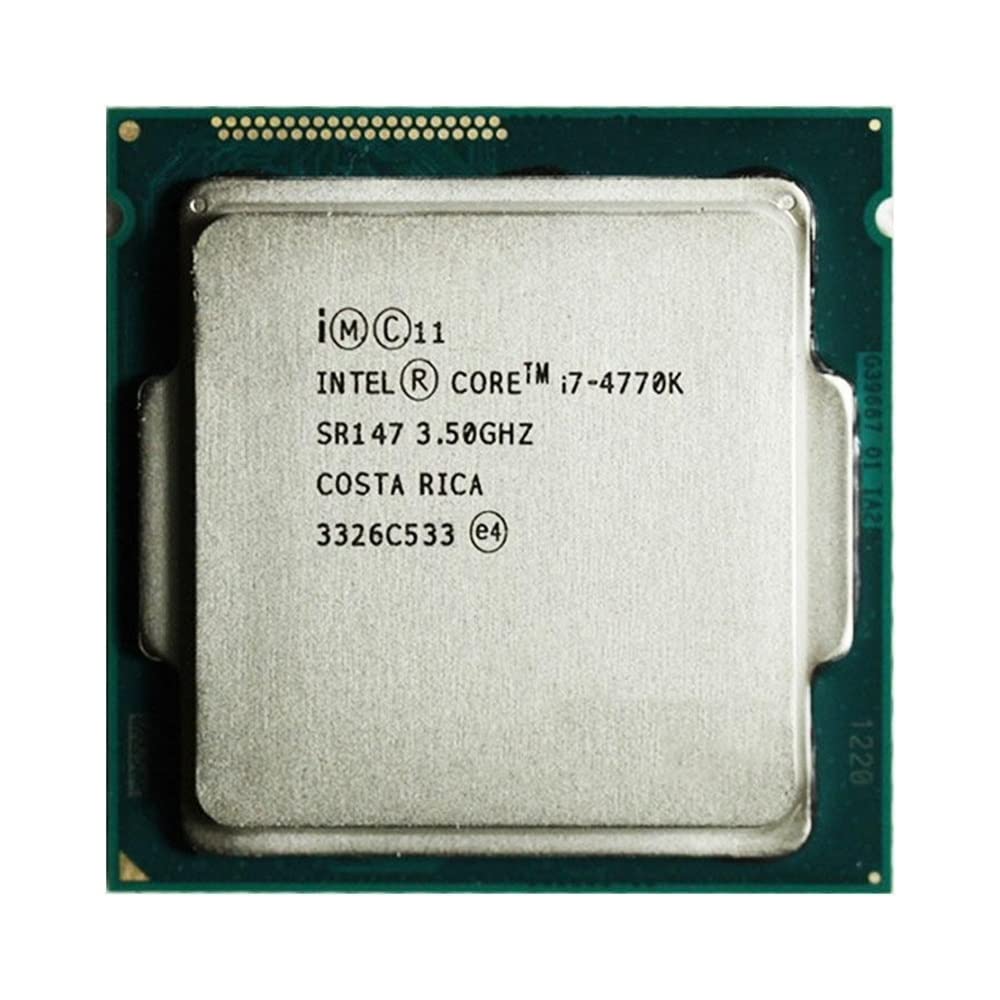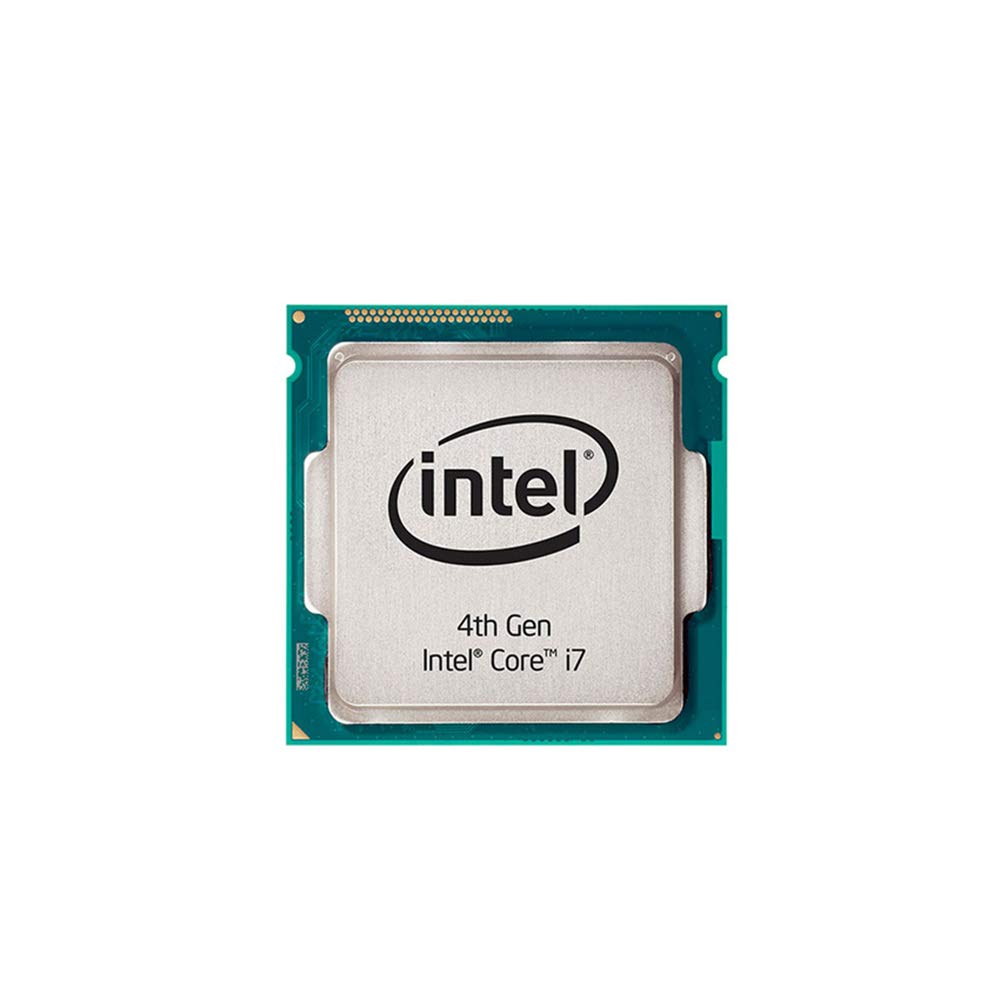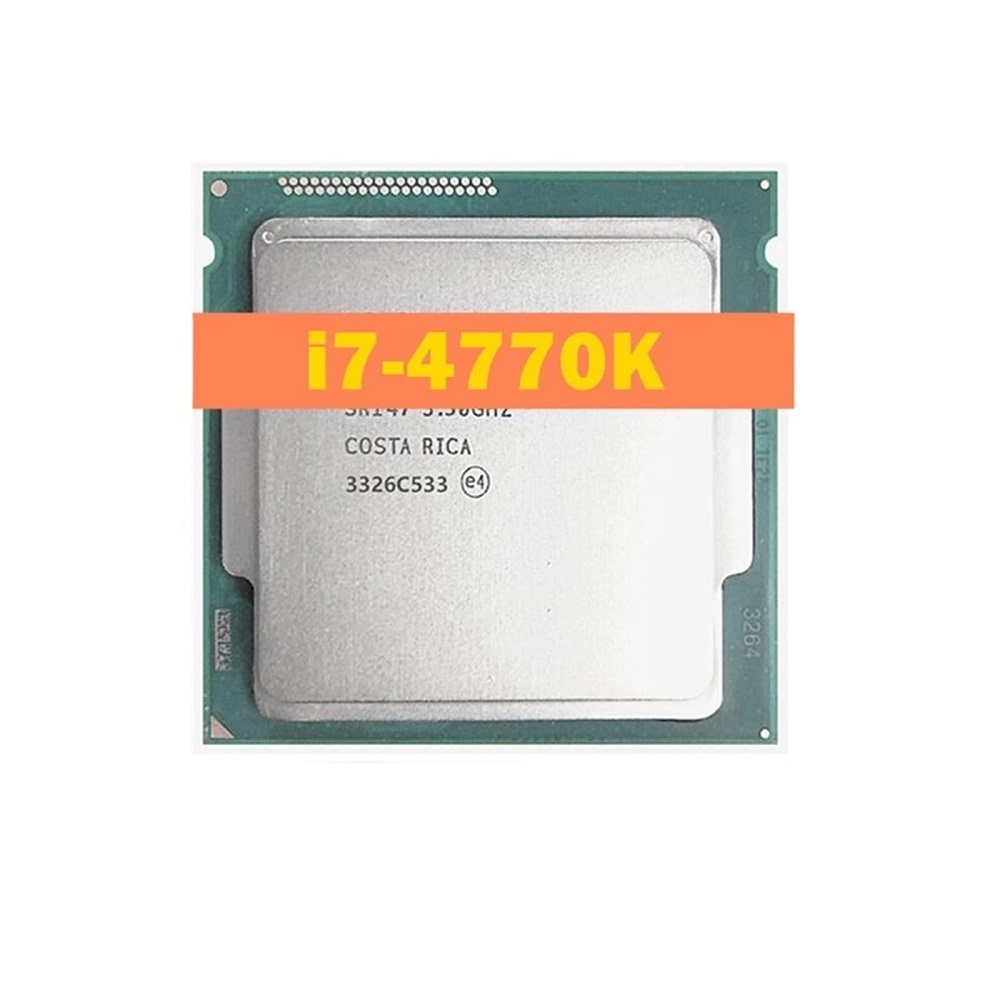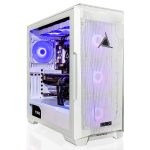Overclocking the Intel Core i7-4770K can breathe new life into your CPU, allowing you to achieve higher performance levels for gaming, content creation, and other intensive tasks. While the Intel Core i7-4770K is already a capable processor, overclocking can push its boundaries, enabling you to maximize its potential. However, this process requires careful planning and execution to avoid damaging the hardware. This guide will cover tips and best practices for overclocking this Intel CPU effectively and safely.
Understanding the Basics of Overclocking
What Is Overclocking?
Overclocking refers to the process of increasing a CPU’s clock speed beyond its factory settings. This allows for enhanced performance, which can be particularly beneficial in demanding applications like gaming and video editing. Intel’s i7-4770K is unlocked, which means it is designed with overclocking in mind, allowing users to adjust its multiplier and core voltage settings.
While overclocking can yield impressive performance gains, it generates additional heat. Therefore, it’s essential to understand both the benefits and risks associated with this practice before diving in. Familiarizing yourself with the fundamentals prepares you for the steps ahead.
Why Overclock the i7-4770K?
The i7-4770K is part of Intel’s Haswell architecture and comes with a base clock speed of 3.5 GHz, which can boost to 3.9 GHz under load with Intel Turbo Boost Technology. Overclocking allows users to push past this limit, potentially achieving speeds of 4.4 GHz or higher, depending on cooling solutions and other factors. This increase can lead to noticeably smoother performance in CPU-intensive tasks, which is a major selling point for many users.
If you’re a gamer looking for higher frame rates or a content creator aiming for faster render times, overclocking can be an enjoyable and rewarding process. Understanding your goals will guide your overclocking journey and help you set realistic expectations.

Preparing for Overclocking
Necessary Tools and Software
Before plunging into overclocking, gather the necessary tools and software. First and foremost, invest in a quality CPU cooler. While the stock cooler may suffice for light overclocking, it often struggles to handle the increased thermal output. Consider aftermarket coolers from reputable brands like Noctua or Corsair.
In addition to the cooler, you’ll need monitoring software. Tools such as CPU-Z and HWMonitor allow you to track clock speeds, temperature, and voltage levels. Stress-testing software like Prime95 or AIDA64 will help you assess stability under load. Finally, ensure you have good thermal paste available for optimal heat dissipation between the CPU and cooler.
Research Your Motherboard Options
Not all motherboards are created equal when it comes to overclocking. Make sure your motherboard has a robust VRM (Voltage Regulator Module) to deliver stable power to the CPU while under load. High-quality motherboards, typically categorized under Intel’s Z series, come with features like advanced BIOS settings that simplify the overclocking process.
Take time to read reviews and do research on the specific capabilities of your motherboard model. Knowing its limitations and features will make your overclocking experience smoother and more effective.
Setting Up the BIOS Environment
Accessing the BIOS
To begin overclocking, you’ll need to access the BIOS or UEFI firmware interface of your motherboard. This is typically done by pressing the “Delete” or “F2” key immediately after powering on your computer. Once inside, you will find a wealth of options related to CPU, memory, and various settings specific to your hardware.
Navigating the BIOS can seem daunting, but most come with clear headings and tooltips. Familiarize yourself with the layout and locate relevant sections for CPU settings. Using caution is key—any wrong move can lead to instability or hardware damage.
Adjusting CPU Multiplier and Voltage
The first critical adjustment involves the CPU multiplier, which determines the clock speed. For example, if your base clock (BCLK) is set at 100 MHz and you set the multiplier to 44, the CPU will run at 4.4 GHz (100 MHz x 44). Gradually increase this multiplier in increments, typically starting at 1-2 steps at a time.
Alongside the multiplier, you’ll also adjust the CPU voltage (Vcore). Start with a modest increase, as high voltage can lead to overheating and damage. The ideal voltage for the i7-4770K typically ranges from 1.20V to 1.35V, depending on your cooling solution and overall setup. Striking a balance between speed and voltage is crucial for maintaining stability.

Stress Testing and Monitoring
Using Stress-Testing Software
After adjusting the multiplier and voltage, it’s time to stress test your new settings. Software such as Prime95 can run your CPU at 100% load, simulating demanding tasks and helping identify any instability. Monitor your system’s temperatures closely during this process to ensure that they stay within safe limits.
Begin with short stress tests of around 10-15 minutes. If your system remains stable and temperatures are manageable, gradually extend the stress test to 30 minutes or longer. If your PC crashes or experiences errors, it’s time to return to the BIOS and make further adjustments to either the multiplier or voltage.
Monitoring Temperatures
Maintaining optimal temperature levels during overclocking is essential. Ideally, load temperatures for the i7-4770K should remain under 85°C. If temperatures exceed this threshold, consider enhancing your cooling solution or dialing back your overclocking settings. Regularly monitor temperatures using tools like HWMonitor or Core Temp while stress testing.
Failing to monitor temperatures can lead to thermal throttling, where the CPU lowers its clock speed to prevent overheating, effectively negating your overclocking efforts.
Fine-Tuning Settings
Incremental Adjustments
After successfully running stress tests without crashing and maintaining reasonable temperatures, you can fine-tune your settings further. Incrementally increase the CPU multiplier and retest. Consider adjusting the CPU voltage as well; small increments can help strike a better balance between performance and stability.
Keep in mind that every chip is different, even within the same model. One i7-4770K may hit higher speeds with less voltage, while another might require more voltage to achieve stability at lower speeds. Remember to take notes of what works for your specific configuration, allowing you to find the optimal settings over time.
Exploring Additional BIOS Features
Aside from the basic multiplier and voltage adjustments, explore other BIOS settings that could optimize performance. Many motherboards offer settings for load line calibration and CPU power limits, which can improve stability during overclocking. These options can help maintain voltage levels under load, reducing fluctuations that could lead to instability.
Incorporating these advanced options can provide further performance gains while ensuring stability, making overclocking a more enjoyable experience.

Reviving Stability Through Testing
Long-Term Stability Testing
Once you achieve your desired overclock settings, it’s essential to conduct long-term stability tests. Run extended stress tests for several hours to simulate prolonged use. This helps ensure that your overclock can handle real-world applications and is sustainable over time.
Your goal is to identify any potential issues that might arise only during extended usage, like memory instability or increased temperatures. Consider using benchmarking tools as well, such as Cinebench or 3DMark, to evaluate performance improvements compared to stock settings.
Adjusting to Workloads
If you find that certain applications push your system too hard, consider adjusting your overclock specifically for those use cases. Sometimes a modest overclock for daily tasks and a more aggressive setting for high-demand scenarios can yield the best balance between performance and reliability. Customizing the overclock according to your workload provides flexibility while ensuring longevity for your CPU.
Maintaining Your Overclock
Routine Monitoring and Adjustments
After successfully optimizing your overclock, routine monitoring is crucial for maintaining system health. Periodically check CPU temperatures and performance levels to ensure everything remains stable. As time progresses, system performance may drift, especially after software updates or changes in workloads. Keeping an eye on these factors helps you adjust settings as needed.
Furthermore, if your environment changes—such as moving to a hotter location or upgrading your cooling—reassess your overclocking parameters. Stability can vary due to several factors, and a proactive approach helps avoid potential issues.
Knowing When to Reset
There may be occasions when your overclock settings become unstable or your system experiences crashes. If you suspect the system is overworked or overheated, returning to stock settings can relieve stress on the CPU. A completed reset may allow you to approach overclocking again with fresh insights and adjustments.
Letting your experience guide adjustments will enhance both your overclocking skills and your computer’s performance. Remember that patience and a cautious approach are essential throughout this journey.
Maximize Performance Safely
Overclocking the Intel Core i7-4770K can significantly boost performance, providing an exciting opportunity for enthusiasts to maximize their hardware potential. Whether you aim for enhanced gaming experiences or faster rendering times, understanding the principles of safe overclocking is essential.
By following these tips and best practices, you can embark on your overclocking journey with confidence. The rewards are well worth the effort, as proper overclocking allows you to tailor your computing experience to meet your needs effectively. Embrace the process, enjoy the performance gains, and always prioritize safety!


